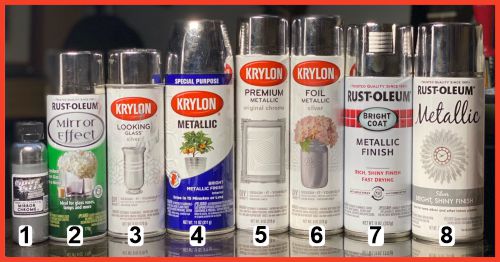Professional mirror re-silvering is expensive and re-silvering shops are few and far between. A do-it-yourself alternative is to use silver spray paint. We test the major brands in 2023 and report the best.
Our tests show that the best spray paint is “Mirror Effect” silver spray paint by Rust-Oleum – available in 6 oz cans (sufficient to silver about 5 square feet of glass. The closest to real mirror silvering is Spaz Stix brand “Ultimate Chrome Mirror” but this is only available in 2 oz bottles for air-brush painting.
Modern Glass Mirrors
In modern mirrors, the silver (or sometimes chromium) is deposited by electroplating directly onto glass. The silver layer is then protected from scratching by a coat of paint. Read more about the history of mirrors here.
Silvering is delicate and prone to damage either by abrasion (scratching) or water (condensation) so very few antique mirrors are perfect.
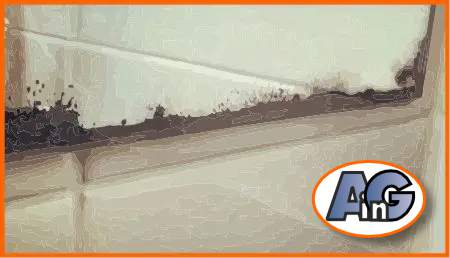
“Black-edge” or other damage to silvering is very common on old mirrors.
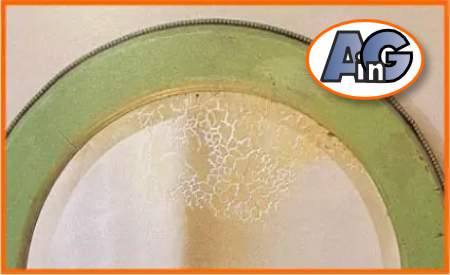
Flaking on this antique beveled mirror is even regarded as a benefit by some sophisticated customers
With damage to mirror silvering being common, the question becomes – is my mirror worth re-silvering?
Our conclusion at Artistry in Glass is that mirrors are seldom worth professional re-silvering. This is because re-silvering is very expensive (unless you live close to a re-silvering shop) and a new mirror is by far the best option. See this useful table for retail prices of new mirrors.
The only exceptions are engraved, or specially shaped mirrors – like the Venetian-style mirror pictured below.
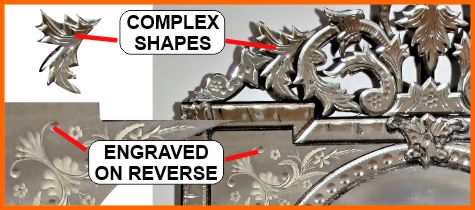
Top candidates for re-silvering are engraved mirrors or complex-shaped specialty mirrors like those in the Venetian style. Contact a specialist restoration company like Artistry in Glass to manufacture custom-shaped or engraved glass.
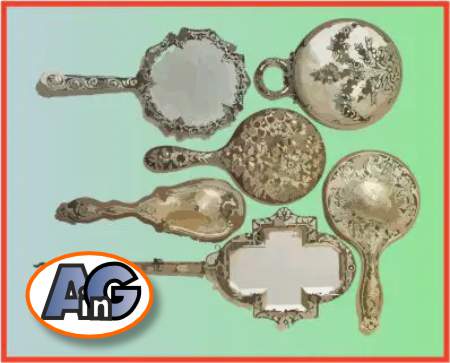
Antique silver hand mirrors are often worth re-silvering, because of their small area and odd shapes
See, to buy a new mirror or re-silver the old for more discussion
As an Amazon Associate, I Earn from Qualifying Purchases.
Do-It-Yourself Re-Silvering
If you are on a budget, and if you do not have a local re-silvering shop, or if you are just a keen hobbyist – it is possible to get acceptable results, especially on small mirrors, by using high-quality silver spray paints.
We carefully tested a range of commonly available paints, mainly from the Krylon and Rust-Oleum companies to determine which ones give the best results.
Our tests show that the closest to real mirror silvering is given by Spaz Stix brand “Ultimate Chrome Mirror”, but almost as good, and much better value for money is our top pick – “Mirror Effect” silver spray paint by Rust-Oleum – available in 6 oz cans (sufficient to silver about 5 square feet of glass).
The Spray Paints We Tested
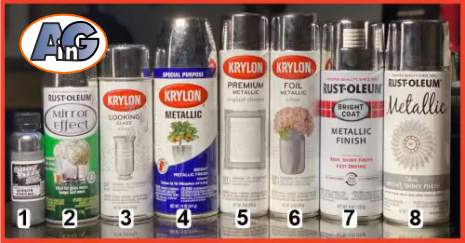
Results of Test with Spray Paint Prices
| MAKER | BRAND | VOL OZ | COST/OZ | Mirror Quality | # |
|---|---|---|---|---|---|
| Spaz Stix | Ultimate Mirror Chrome | 2 | $7.50 | Best | 1 |
| Rust-Oleum | Mirror Effect | 6 | $2.25 | Close Second | 2 |
| Krylon | Looking Glass Silver | 6 | $1.66 | Third | 3 |
| Krylon | Special Purpose Metallic | 11 | $1.41 | Matte Silver | 4 |
| Krylon | Premium Metallic | 8 | $2.25 | Matte Silver | 5 |
| Krylon | Foil Metallic Silver | 8 | $1.66 | Matte Silver | 6 |
| Rust-Oleum | Bright Coat Metallic Finish | 11 | $1.18 | Matte Silver | 7 |
| Rust-Oleum | Metallic Silver | 11 | $0.67 | Matte Silver | 8 |
All the spray paints come in aerosol cans available from hardware stores or on Amazon, except paint #1 – “Ultimate Mirror Chrome” which is a liquid for airbrush painting and is designed mainly for model-making hobbyists.
Remember to follow health and safety precautions when using volatile and flammable aerosol paints.
Note that the coverage for these silver spray paints is between one and two square feet per ounce.
Testing Procedure
Using 1/4″ thick standard clear mirror, we remove the paint and the silver and prepare clear strips to test the spray paints and compare them to clear mirror.
Removing the Protective Paint
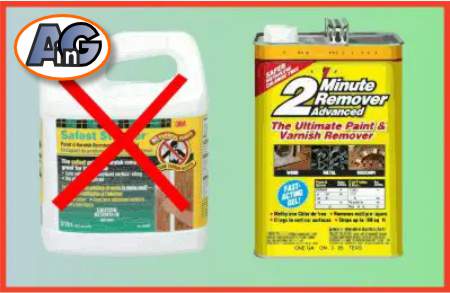
Mirror paint is tough, and eco-friendly, low-VOC strippers do not work. We recommend a strong paint stripper like 2 Minute Remover from the Sunnyside Company (available at Ace Hardware or Amazon).
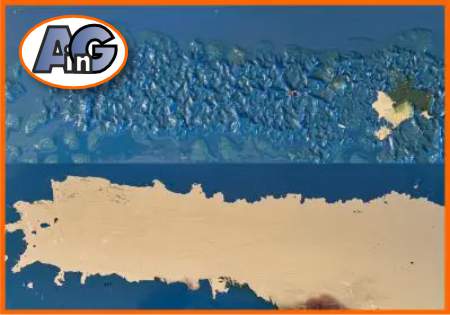
Two applications of stripper were necessary to remove the paint from this 8-inch by 3-inch piece of modern mirror.
Removing the Silvering

We used “Strip Silver” (active ingredient chromium trioxide), formerly marketed by the Armour Company but now discontinued. A currently available alternative, composed of ferric chloride, is distributed by Angel Gilding and can be purchased on Amazon by following this link.
Test Results
We sprayed the de-silvered strips of mirror and found that most of the paints produced a light silver matte-textured appearance.
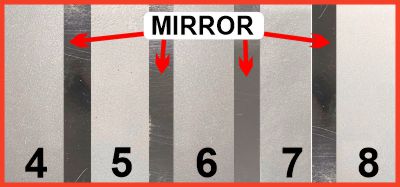
Most of the paints did not produce a mirror finish
#4 Krylon “Special Purpose Metallic”, #5 Krylon “Premium Metallic”, #6 Krylon “Foil Metallic Siver”, #7 Rust-Oleum “Bright Coat Metallic”, #8 Rust-Oleum “Metallic Silver”
Comparing the Paints to Mirror
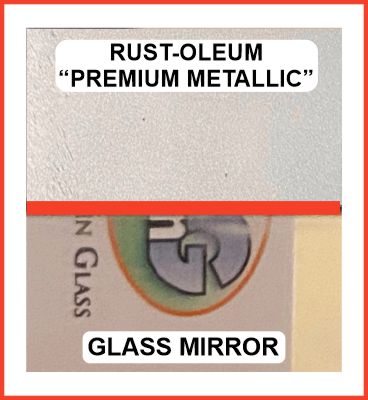
Paints #4 through #8
Paints #4 through #8 all produce a matte silver finish like this example #7.
The silver in all these paints is produced by finely ground aluminum and we think the matte finish is due to the relatively coarse grain size of the aluminum flakes. The grains diffuse the light but do not produce a reflective surface.
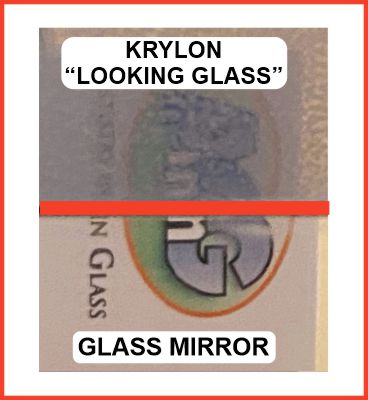
Third Place Paint: Krylon “Looking Glass”
Krylon Looking Glass paint, available here on Amazon, is our third pick because it forms a definite reflective surface but is much less perfect than our top two choices.
This might be an option for hobbyists looking for an antique or distressed-looking mirror.
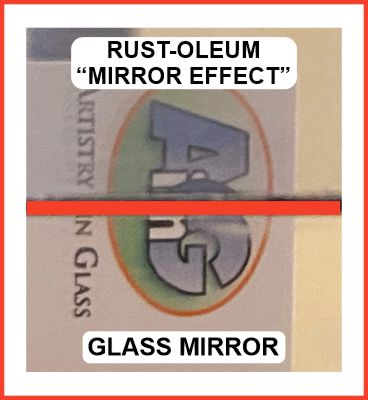
2nd Place for Quality: Rust-Oleum “Mirror Effect”
Rust-Oleum “Mirror Effect”, available here on Amazon is the close 2nd best for quality but is our #1 recommendation for value because the winner (below) is so much more expensive.
Apply up to five coats, allowing each coat to dry. Finish by protecting the surface with a coat of clear matte varnish.
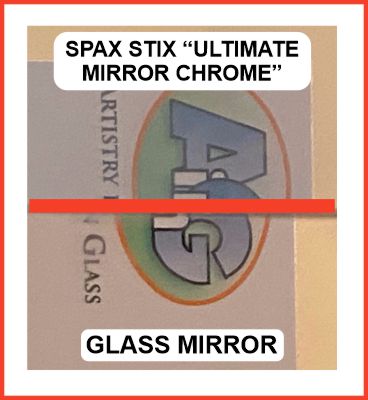
We found that the Best Mirror Quality is “Ultimate Mirror Chrome” Air-Brush Paint by Spaz Stix
Ultimate Mirror Chrome paint is really made for hobbyists to paint models rather than for silvering large mirrors. But if you have a small mirror (like an antique hand mirror) and you know how to paint with an airbrush, then this paint made by Spax Stix will give the best results.
Instructions for Using Silver Spray Paint
Edited from the Rust-Oleum website, these are the instructions for using their spray paint.
Before using Mirror Effect, clean the object with glass cleaner or soap and water, then dry with a microfiber cloth. Apply Mirror Effect in very thin coats, allowing the paint to dry for 1 minute between each coat. Apply up to 5 coats to achieve the desired mirror effect. For added protection or reflectivity, apply a thin coat of Rust-Oleum® Ultra Cover 2X Matte Clear. For a darker appearance, apply a thin coat of Rust-Oleum® Ultra Cover 2X Flat Black over the painted side of the Silver Mirror Effect.
Conclusions: Our Top Three Paints
Best Quality but for Air-Brushing

Spaz Stix Ultimate Mirror Chrome Airbrush Paint 2oz
We used a standing hobbyist’s airbrush to spray paint clear glass in our final test. Be sure to clean the glass very thoroughly because any speck of dirt will show. Five thin coats produce a very good mirror finish. This is an excellent choice for small mirrors but very expensive if you have 2 square feet or more. Protect the mirrored surface with black paint after silvering.
#1 Choice in Aerosol Spray Paint
Rust-Oleum 267727 Specialty Mirror Spray
Our best value: almost as good in quality as Spaz Stix brand but available in 6 oz cans – sufficient to cover about 5 square feet. Dries in 10 minutes – apply 4 or 5 thin coats and cover with protective paint or varnish. Can be used on glass or plexiglass.
#2 Choice in Aerosol Spray Paint
Krylon Looking Glass Silver-Like Aerosol Spray Paint
In our tests, this Krylon spray paint came second in mirror quality. Like the Rust-Oleum Mirror Spray, it comes in 6 oz cans and the maker says will cover 7 square feet, Can be used on glass or plexiglass. Use the same instructions as previous product – 5 coats, leaving to dry for 5 minutes between coats.
Retail Prices of Clear Mirror
The price of mirrors varies widely from shop to shop and in different parts of the US. Use the approximate retail prices, in the table below, as a guide to decide whether it is worth your time and effort to strip and re-silver an old mirror. Notice the weights of the various thicknesses – consider choosing a lighter-weight mirror for easier hanging.
| Thickness in | 2 sq. Ft. | 3 sq. Ft. | 4 sq. Ft. |
|---|---|---|---|
| 1/8″ | $21 (3.4 lbs.) | $24 (5.1 lbs.) | $27 (6.8 lbs.) |
| 3/16″ | $35 (5.1 lbs.) | $39 (7.7 lbs.) | $42 (10.2 lbs.) |
| 1/4″ | $48 (6.8 lbs.) | $54 (10.2 lbs.) | $66 (13.7 lbs.) |
To Buy a New Mirror, or Paint the Old One?
We have found that the effort involved in removing the old silver and painting is only worthwhile for special antique mirrors – that is mirrors with decorative engraving or special shapes (like Venetian mirrors) or small, precious hand mirrors.

Carefully remove defective pieces (they are screwed or glued to the substrate), clean off the old silvering and spray paint. If the glass is chipped or cracked, tape the broken pieces together and take them to a company like Artistry in Glass to be recreated.
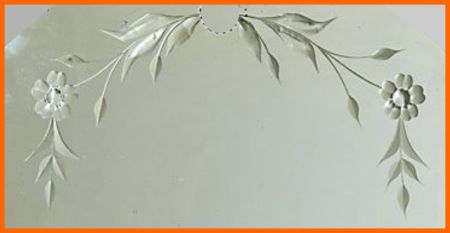
If you would like to preserve the historic and authentic engraved glass, carefully remove the paint and silver, taking special care to dissolve all traces of old silver in the engraved areas. Then spray with our recommended silver spray.

Antique, silver hand mirrors are treasured belongings, often handed down through the generations.
These are good candidates for restorative spray painting because of the small surface areas (less labor-intensive) and their special shapes and beveled edges (expensive to re-produce the mirror). Remove the old mirror very carefully before re-silvering.
Can I Disguise a Scratched Mirror with Paint or Aluminum Foil? – Follow this Link to Find Out.
Postscript: the History of Mirrors
The first mirrors used by mankind were simply pools of dark, still water in ponds or primitive drinking vessels. By the Stone Age, mirrors were made from polished rocks like obsidian. In the Bronze Age through Roman times burnished disks of copper, bronze, or silver were widely used.
Modern silver on glass mirrors dates from the discovery of the wet-deposition method of mirror manufacture by German chemist Justus von Liebig in 1835. A fine layer of metallic silver is deposited on glass by the reduction of silver nitrate. This discovery led to the widespread availability of affordable mirrors. These days the silver (or sometimes chromium) is deposited by electroplating directly onto glass. The silver layer is then protected from scratching by a coat of paint.
Unique Mirror Resources from Artistry in Glass
Mirror Design & layout
- How are mirrors made?
- What is a beveled mirror?
- What is a two-way mirror?
- Best mirrors for bedrooms
- How to size and position your wall mirror
- How to order custom etched mirrors
- Best places to hang dining room mirrors
- How much do wall mirrors cost?
- Shop the MIRROR Family Package
Mirror Installation & Removal
- How to hang a wall mirror
- How to frame a builder’s grade bathroom mirror
- How to hang a frameless mirror with glue
- Best clips for hanging mirrors
- How to attach a mirror to a closet door
- How to remove a mirror glued to the wall
Mirror Repair & Restoration
- Should I resilver my antique mirror?
- Can I repair scratched mirror silvering?
- What is the best spray paint for mirror silvering?
- How to fix a cracked mirror
- How to repair a broken mirror frame
Artistry in Glass was your source for antique repair in Tucson
Check out this amazing selection of informative articles:-
- Where can I get antiques repaired?
- Are broken antiques worth fixing?
- How to fix a broken picture frame
- How to repair a broken china plate
- How to repair a broken china teapot
- How to fix a broken marble slab
- How to repair a broken china coffee mug
- How to repair a 2000-year-old sculpture
- All about repairing stained-glass lampshades
- How to care for your stained glass skylight
- How to repair Dalle de Verre
- Is stained glass worth repairing?
- To repair or toss out?
- Tucson crystal & china repair a division of Artistry in Glass
- What to do with broken antiques
- Is lead crystal dangerous?
- Repairing an antique Mexican statue
- Repairing religious statues
- The history of Swarovski crystal figurines
- How to find the value of a Swarovski Crystal figurine
- Have Swarovski crystal figurines lost value since 2009?
- How to collect Swarovski annual ornaments
- How to display Swarovski crystal figurines
- How to authenticate a Swarovski crystal figurine
- How to display Swarovski annual ornaments
- How to clean Swarovski crystal figurines
- How to repair a Swarovski crystal mouse
- How to repair a Swarovski annual ornament
- How to repair a Swarovski crystal train set
- Fixing broken wine glass stems
- How to clean cloudy glasses
- Why do wine glasses have stems?
- Swarovski Crystal Figurines
- How to repair a chip in a wine glass
- How to fix a scratched glass tabletop
- How to replace a broken patio tabletop

